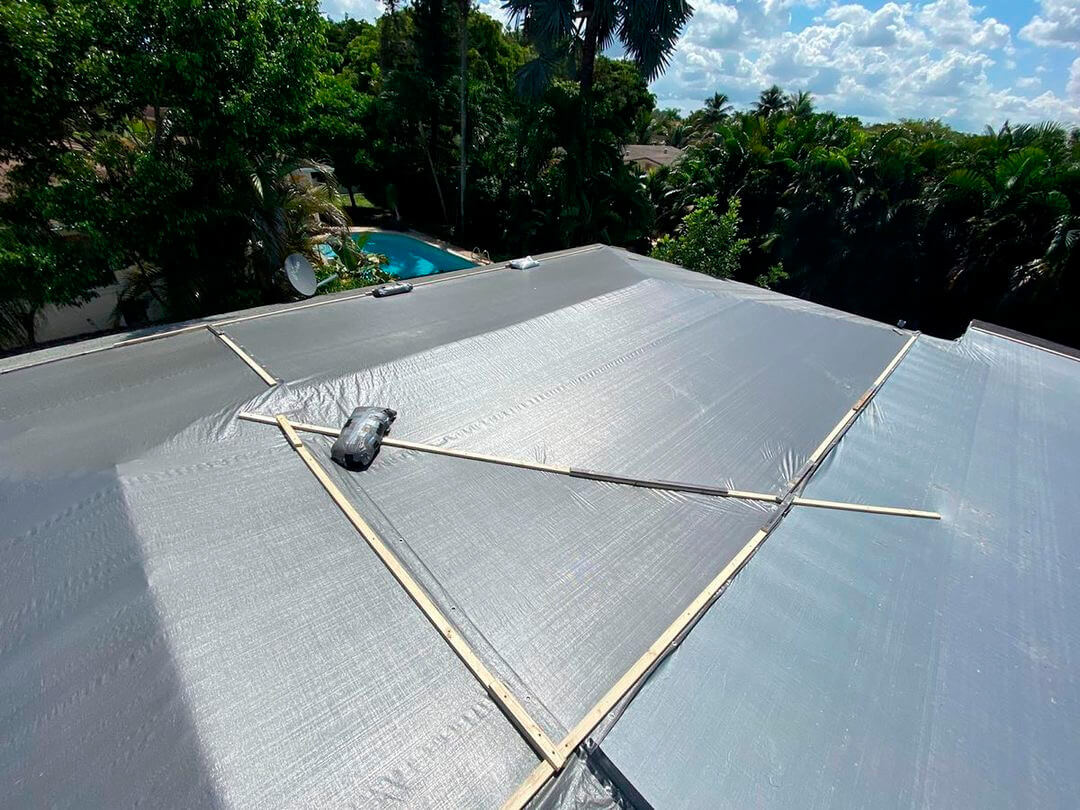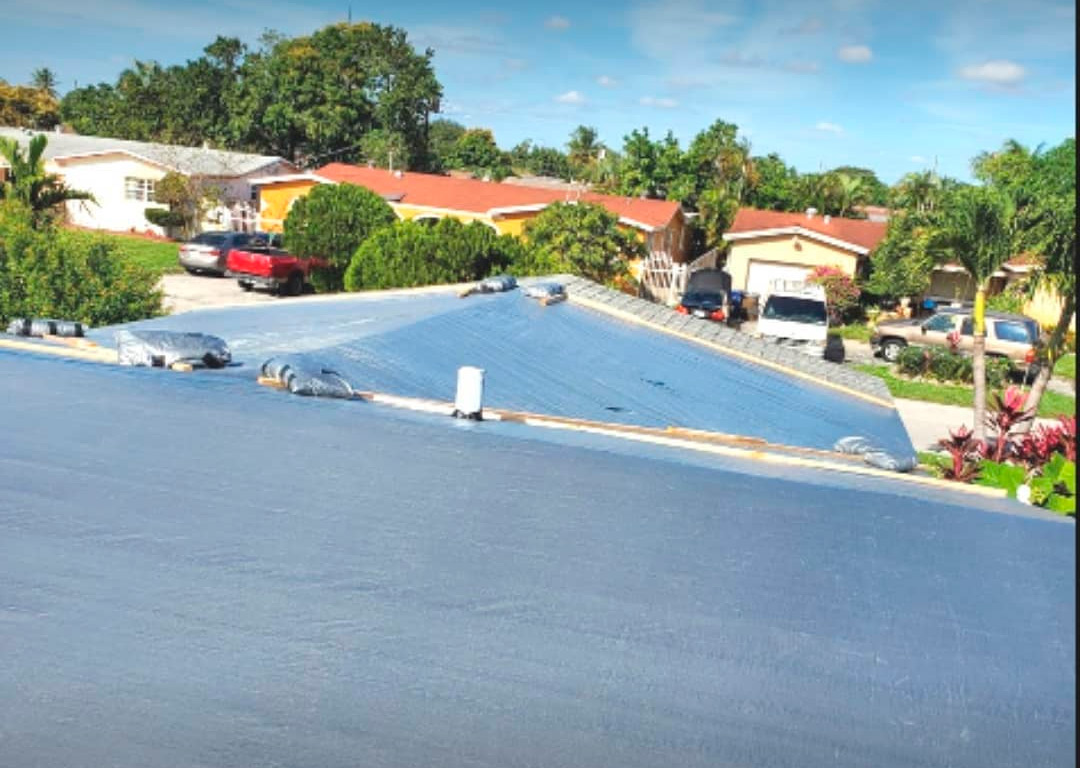Homestead
An in-depth guide book to Roof Tarping Homestead
Your roof can be severely damaged after a major storm. Whether or not it is immediately apparent, substantial roofing damage is followed by water penetration, mold, mildew, destroyed property, and poor health. To prevent more damage from happening to you, your friends and families, and your property, you will require emergency Roof Tarping in Homestead repairs.
Home protection from the elements is provided by tarring a roof. Roof Tarping in Homestead protects the house from inclement weather lasting up to ninety days when put properly. This tutorial explains how to quickly and affordably tarp a roof tarping service in Homestead to protect you dry while you figure out the problem or hire a team of experts to fix it.
After thoroughly assessing the damage, rid the area of any debris. It’s also wise to have the following advice in mind:
- When it’s windy or pouring during a storm, avoid roof tarping service in Homestead.
- Wear the proper safety gear. It includes strong boots, safety apparel, gloves, and goggles.
- For access to the roof, use a ladder. Look closely for any deterioration areas, such as broken shingles.
- If their roof is slippery or steep, homeowners should look for damage from the protection on their ladder. Never walk right up onto the roof.
- Utilizing your broom, carefully clear the debris off your roof. To improve your perspective, clear the area of any branches, leaves, and other debris.
- Ask a buddy to assist you in inspecting, cleaning, and roof tarping service in Homestead for your protection and support.
For a tarp that is the right size, accurately measure the affected area through the roof tarping company in Homestead. Consider the following for it:
- To determine the damage’s land area, use a measurement device.
- Take notice of the dimensions and select a heavy-duty tarp that fits.
- The tarp must extend four feet over the top of the roof when it is unrolled to cover the damaged area completely.
- Any additional tarp may be securely hung from the roof’s edge.
- To determine the damage’s land area, use a measurement device.
- Take notice of the dimensions and select a heavy-duty tarp that fits.
- The tarp must extend four feet over the top of the roof when it is unrolled to cover the damaged area completely.
- Any additional tarp may be securely hung from the roof’s edge by the roof tarping company in Homestead.
By taking this action, you can be confident that your tarp is mounted correctly. For your tarp to remain in place during windy or stormy circumstances, it must be fastened and weighted down. Using sandbags to weigh down a tarp and prevent it from blowing away is the simplest way to keep it in place. It is preferable to utilize this as a short-term solution. Emergency roof tarping in Homestead is vital to prevent properties from lashing rains, snow, or debris from gathering. The board must lie against the roof and be 2 feet wider than the tarp’s width.
Emergency Roof Tarping in Homestead will help protect the damaged area by securing the roof tarp to prevent flutter, water intrusion, and waste from invading
- Screw your screw gun into the four tarp-rolled planks to fasten the tarp. Use screws that are long enough to penetrate the board, shingles, tarp, and roof decking.
- It firmly secures the tarp to the roof. When you take off the tarp, and then will need to repair the damaged shingles. However, shingle replacement costs less than the severe water damage that a leaking roof may cause.
- To use a screw machine and screws, fasten the remaining tarp sides to extra 2 x 4-inch planks. It is optional to wrap these planks within the tarp.
A temporary defence against damage to your house is a roof tarp in Homestead. Have your roof examined and repaired to prevent more harm to your homes’ inside.
Following a storm, two roof tarp installations in Homestead styles are typical:
- Temporary — As the last showers fall, a makeshift tarp is thrown over the roof of your house and fastened to it just at the bottom and side borders. Without nail holes and through tarp roof Homestead or ridge, water doesn’t get inside your house. Wind uplift can be avoided by using weighted sandbags or furring strips.
- Long Term — It could be necessary to set up a long-term tarp until insurance concerns, scheduling conflicts, or contract constraints are resolved. In this instance, a heavier, more securely tied tarp will replace the tarp roof.
What Are the Prices for Emergency Roof Tarps?
Once engaging in roof tarp, you should average a budget between $200 and $1,500. Tarps should be weather-resistant, waterproof, and thick enough to endure the elements to safeguard valuables from harm effectively. Costs vary based on several variables, such as the following:
- Size and quality of a tarp
- Location and accessibility of the property
- Roof slope and pitch
- the degree of damage to the roof
- Materials (nails and 2^4) will be employed
You will also need to account for labor expenses and emergency premium fees if you use a local roofing contractor. Fortunately, the majority of roofers offer thorough quotes.
What is the best time to use long-term roof tarping?
When the roof leak repair is anticipated to take three months, high-quality, hefty, UV-protected tarps are a significant investment. You may save money by purchasing an elevated tarp that will last longer.
Long-term tarping gives you breathing room, but keep in mind that a tarp on the roof won’t make your house entirely watertight, insulated, or pleasant. While your roofing contractor performs the required replacement or long-term repairs, they support and safeguard your home.
How long a tarp may be left on a roof?
Tarps are comprised of water, ice, and air-resistant polymeric materials. On the roof, tarps typically last 90 days, but those made of more durable fabrics can endure for more than two years. It might cause further problems if you retain it for longer than 30 days. Thus roof tarp installation in Homestead contractors advises against doing so.


